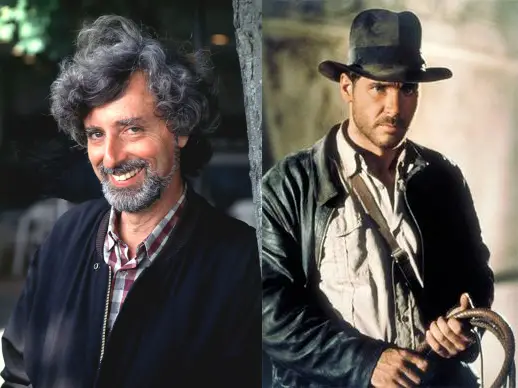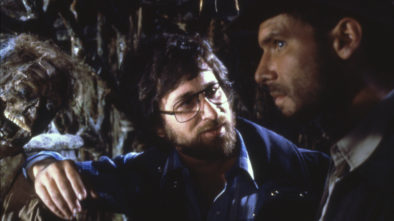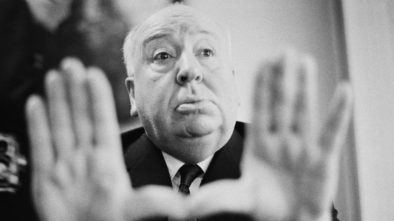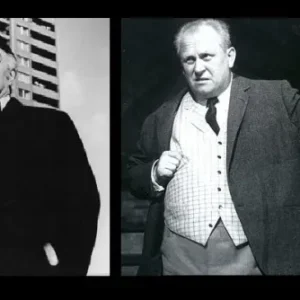Philip Kaufman: The Filmmaker Behind Indy’s Pursuit of the Lost Ark
The official story behind Indiana Jones’s first big-screen adventure, Raiders of the Lost Ark, has mythic status. George Lucas famously recounted his idea for an intrepid archaeologist-adventurer to Steven Spielberg on a Hawaiian beach in 1977. Spielberg, who always wanted to make a globe-trotting adventure in the tradition of James Bond, accepted the offer to direct then and there. Months later, in January 1978, the pair hashed out the story outline over three days with screenwriter Lawrence Kasdan. This is all true, but if you watch the opening credits for Raiders, Lucas shares a story credit with another filmmaker, Philip Kaufman.
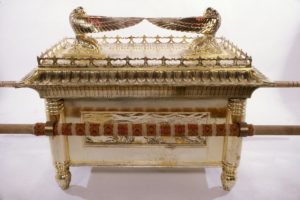
Promotion image of Ark of the Covenant for Raiders of the Lost Ark (Image: Paramount via MovieStillsDB.com)
Kaufman is reduced to a passing mention in most accounts, but the filmmaker made significant contributions to Indy’s first adventure. He selected the hero’s first McGuffin–the Ark of the Covenant. And he was given the opportunity to direct before Lucas even considered Spielberg. It’s the typical development hell story from Hollywood of bad timing and reversals, with it all ending in a legal bind and a story credit.
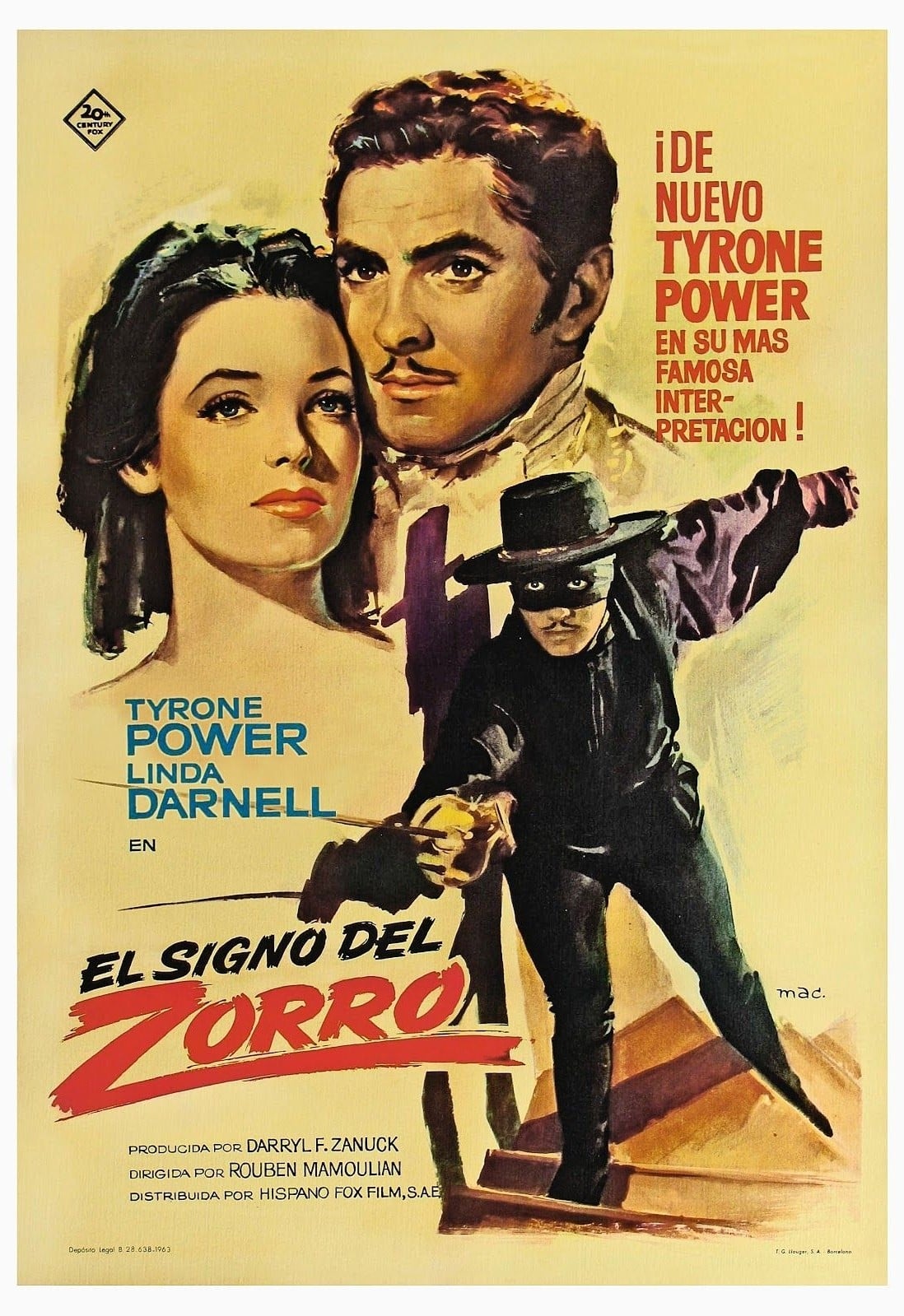
The idea for Indiana Jones initially came to George Lucas in 1973. Fresh off the success of American Graffiti, Lucas came up with the idea of an archaeologist-adventurer after seeing an old movie poster of a hero jumping from a horse to a truck. The image triggered memories of the Republic serials and old matinee adventure films like Spy Smasher and The Mark of Zorro. He wanted to revive this old matinee serial style of adventure, but on a bigger scale with more elaborate stunts and effects.
There’s also a little bit of Allan Quartermain and real-life adventurers in the character then known as Indiana Smith. Quartermain and the adventurers of the early 1900s all wore similar attire to Indy’s leather jacket and fedora, but Indy’s trademark bullwhip most likely came from Zorro.
The image stuck with Lucas for the next two years, a time when Lucas’s failure to acquire the rights to Flash Gordon led to his own original space opera, Star Wars. But in 1975, he was struggling with the screenplay, and during a meeting with Kaufman, the idea for Indiana Smith emerged again.
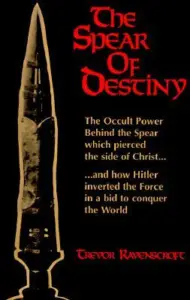 Lucas and Kaufman met over the following three weeks scribbling ideas on Lucas’s preferred writing medium: yellow-legal pads. A synopsis developed that became the basis for the story conference between Lucas, Spielberg, and Kasdan in 1978. Kasdan, himself, consulted Kaufman after the story conference for more ideas that would form the basis of the plot.
Lucas and Kaufman met over the following three weeks scribbling ideas on Lucas’s preferred writing medium: yellow-legal pads. A synopsis developed that became the basis for the story conference between Lucas, Spielberg, and Kasdan in 1978. Kasdan, himself, consulted Kaufman after the story conference for more ideas that would form the basis of the plot.
Lucas described his character to Kaufman as a 1930s-era professor/playboy type character who fought Nazis by day and seduced beautiful women in glamorous clubs by night. Kaufman saw a way to combine this idea with the Nazis’ fascination with the Occult and the pursuit of mystical artifacts, an idea he got from reading Trevor Ravenscroft’s The Spear of Destiny: The Occult Power Behind the Spear Which Pierced the Side of Christ. Rather than pursue the Spear of Destiny, Kaufman suggested the film’s McGuffin be the Ark of the Covenant, after remembering a story recounted to him by his dentist when he was a child.
Additional articles Kaufman read defined the Ark’s appearance, dimensions, and the materials it was made from. In a transcript of a conversation he had with Kasdan, Kaufman explained that the articles referred to the Ark as:
“a means of communicating with some other being, that it was a primitive or maybe highly elaborate radio wave that was on the right sensitivity for this kind of communication, and in fact when they use to go into battle there was a cloud that hovered over — they carried the Ark with them in the early days and there was always this cloud that hovered over the Ark and they were always victorious. They never lost whenever they carried it into battle.”
Kaufman’s research made its way into the final film, when the French villain and rival archaeologist, Belloq, describes the Ark as “a radio transmitter for speaking to God”. Kaufman also got the idea that whoever carried the Ark was invincible, which is why it was so important that Indy get the Ark before the Nazis. Kaufman’s research also inspired the film’s climax when the Ark is opened and kills the Nazis. The Ark even has a cloud overhead which parts when the power of God sends the Ark’s lid high into the sky.
Initially, Lucas offered Kaufman the director’s chair. But after being offered The Right Stuff, Kaufman left the project. Lucas then passed on Indiana Smith and his Lost Ark to his friend Steven Spielberg in June 1977. Spielberg would drop Indy’s playboy persona, and change Indy’s last name from Smith to Jones. But the essence of the story remained Kaufman’s. The mystical and supernatural nature of the Ark became an essential component of all future Indy films from the Holy Grail’s “representation of the divine in all of us”, to the mind-bending powers of the crystal skull. They’re all mysterious artifacts from religion or common folklore that possess supernatural powers.
When Raiders of the Lost Ark became a box office success, Lucas contacted Kaufman offering him a percentage of the film’s profits. Kaufman initially accepted, but his lawyers stepped in and demanded a story credit too. Under the rules set out by the Writers Guild of America, this entitled Kaufman to a story credit on the sequels too. After some bitter negotiations, Kaufman got his story credit and profit percentage. But Lucas did manage to keep Kaufman’s name off the opening credits of future Indiana Jones movies.

